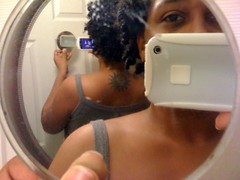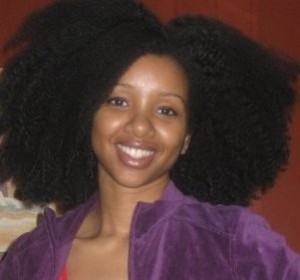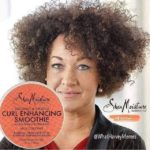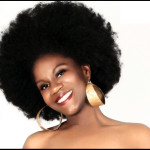Products For”Any” Type of Hair

![]() photo credit: Urban Hippie Love
photo credit: Urban Hippie Love
This weekend I was cleaning the house and turned on the T.V. so it could play in the background. The channel just so happened to be tuned to a hair product infomercial featuring a Caucasian woman and a lighter skinned woman of African descent.
The infomercial was for Chaz Dean’s Wen® product that (according to the website) promised a “A 5-in-1 formula [that] takes the place of your shampoo, conditioner, deep conditioner, detangler and leave-in conditioner.”
Ordinarily, I would have continued flipping the channel. But I had never seen a product that claimed to work on “any” type of hair so I was intrigued and kept watching.
Plus, I was struck by the fact that the Black woman had what looked like natural hair. She was actually rocking a super fly, twistie blow out style. Her hair looked a little dry, but it was essentially in a style that I and many of my natural-head sista friends wear often.
Kinda like this:
From her “before” picture, the Black woman, (let’s call her “Naja” – that might have actually been her character’s name but I can’t remember) had a hair texture that looked like it had a soft, curly kink to it. It was FAR from my own very tight nappy texture but I was so happy just to see brown skin rocking a natural on T.V. that I kept watching.
That is…I was happy until the infomercial narrator started talking.
Please note – I really am not interested in whether or not the product does what it says it can do. I went natural before the current explosion of natural hair products so I have never really been a product junkie. My biggest issue was with the words and the tones used to describe the nature of Naja’s hair – and what those words and tones mean for our collective self-esteem.
The Language of Nappiness
Naja and the White woman (let’s call her “Jen”) were seated next to each other in front of shampoo bowls. Jen’s blond hair was described with words like “brassy” and “limp.” To my eye, it just looked like she hadn’t brushed her hair that morning, but hey, who am I to judge?
But when they got to Naja, I began to feel that familiar irritation in the back of my neck. You know the feeling I’m talking about.
That feeling when you know something disrespectful is about to be said about nappiness and you’re just sort of waiting to see where the conversation goes…
So they fluff out Naja’s hair and start to describe her hair texture. They begin using phrases like really “dry” (she needed some moisturizer) “totally out of control” (it looked like a twistie blow out) and “overly coarse” and other such terms to explain her hair. After my mouth dropped open, I realized that it wasn’t just the words they were using (though the words were bad enough)…it was the tone behind the words.
That disapproving “your-hair-is-substandard” tone. That tone that says, not only does your hair have all of the typical hair problems of people with hair – but those problems are exacerbated by the fact that they stem from the very nature of your hair itself.
It’s the tone that epitomizes the sentiment that says Caucasian hair is the standard against which all other types of hair must be measured. It’s the tone that says the farther your hair is from Jen’s straight, blond hair, the farther down you are on the “good hair” hierarchy.
So whereas Jen was merely looking to refine her already fine hair, Naja’s hair needed to be tamed. Naja’s hair wasn’t just dry, it was totally out of control. While Jen’s hair goals had nothing to do with her hair’s texture, Naja’s hair texture was inherently wrong.
It wasn’t just “coarse” – it was overly coarse. Several definitions for the word Coarse include “rough to the touch,” “lacking in delicacy or refinement,” or “of low, common, or inferior quality.”
You might as well just say Naja had the equivalent of what one thinks of when one hears the words “bad hair.” (Keep in mind, as shown on the commercial Naja’s hair looked naturally kinky – but it did not look like that “straight-from-the-mother-land-of-nappiness” type of kink.)
But I was willing to let those subliminally disrespectful messages slide…until I saw what the final result was aiming for.
After they washed in the chemicals the next scene showed the “after” images which you can see here. Jen had blonde, straight, healthy looking, Caucasian hair. I wasn’t sure what the product was supposed to have done for her, but her hair looked nicely combed.
That’s great.
But then they showed the end result for Naja. Her “after” picture is featured on the website on the bottom left hand side. Her hair looked like it was full of Shirley Temple curls. Like fat, curly ringlets, the kind my niece and her friends call “mixed girl hair.”
Different Hair, Different Standards.
The stylist’s goal for Jen was to create full, healthy looking hair. The stylist’s goal for Naja’s seemed to be aimed at finding a way to de-nappify her natural hair so it could shake and move.
Like Jen’s.
Jen’s hair goal was firmly within the bounds of what one could reasonably expect from Caucasian hair in its natural state. Naja’s hair goal was to transcend nappiness and come one step closer to a hair texture like Jen’s.
Here’s why that is problematic: Black hair is not the same as White hair. It doesn’t act the same, grow the same or look the same. And it is not supposed to. Like one of my heroes Tom Burrell says in his book Challenging the Myth of Black Inferiority (a book you seriously need to read), “Black people are not dark skinned White people.”
Black hair is nappy. By design and divine intention. (And if you don’t believe in divinity – by evolutionary design.)
Nappy hair has its own standard. That standard is not a brown version of the standard for Caucasian hair.
Nappy hair has its own rules. Those rules are not a darker version of Caucasian hair rules.
Nappy hair has its own needs. Those needs are not a negrofied version of Caucasian hair needs.
Time to Reject Rejection
I grow tired of this sentiment that the goal for nappy hair should be soft “loose” curls. I am irritated with the notion that in order to have natural hair, you have to start with what many consider a “good hair” curl pattern. I am frustrated by products that aim to convince us that in order to wear an afro, you need to be able to run your fingers through it.
This might be less of an issue if some in the nappy hair community did not in some ways also embrace (or at the very least encourage) those goals.
I have had numerous conversations with fellow sisters-in-nappiness over the years where this issue comes up. Though many of us choose to embrace our natural hair, a lot of us do so with a caveat.
That caveat says that the goal for nappiness is to have a Caucasoid version nappiness. Nappiness that isn’t too kinky. Nappiness that combs “easily.” Nappiness that is not permed, but is still a soft, curly, moving, flowing head of not-so-nappy hair.
My sisters, our hair is simply not a darker, nappier, kinkier version of Jen’s hair.
I’m really looking forward to the day when we can collectively reject the idea that there is a certain “type” of acceptable nappiness. I look forward to the day when my community will embrace the 3-inch tightly kinky afro, as much as they embrace it when it is in long, flowing, moving two-strand twists.
Natural sisters, we’ve come a long way from the days when one ran from the napps like they were running from the Klan. And that is wonderful.
But we have not yet been able to embrace the type of nappiness that is the complete antithesis of Jen’s hair. That down, home, tight, kinky hair pattern that shrivels into a quarter of its size when it hits moisture.
My sisters-in-the-napps, we have a lot to be happy about. But we still have a lot of work to do…
Onward in nappiness.





Totally sweet thoughts to see….
Thanks for the support! 😉
Thanks for your great article! It has been extremely helpful. I wish that you will continue sharing your wisdom with us.
Thanks!
This post truly captures what it is to fully embrace being natural. Very thought-provoking!
Thank you!
Lurie girl keep this up!! I am all ears over hear and I really enjoy your blog! Keep posting and sharing truth.
Thank you!
Grrrreat! I was looking for ways to loosen my sons hair to prevent his mother from waking it off, which has become the new wave of nappy hair management. Nappy makes me
Happy cause Christ the King, our Anointed Savior which is the son of the Living Power has wooly or nappy hair (KJV 1611-Rev 1:1 & 1:14). So, nappy hair is the royal hair. We can do anything with nappy hair. It’s like play dough. Straighten it, curl it, braid it then in an instant, back to nappy. Who can do that? No! The so-called Negros are not African or Gentiles. Africa was named after a Roman General named Leo Scipio Africanus and America was named after a Sailor named Americo Vespucio, both Caucasian. We, the so-called Negros are the people of the bible which was scattered throughout the four corners of the earth for disobedience…in a nut shell the so called Negro’s hair is the best hair and hair of Royalty.
But why are youngsters so obsessed with trend?
I found this because I had to know if I was the only one who wanted to reach through the TV and smack Chaz Dean, the little hispanic one, and Naja when he had the audacity to say that Naja’s hair was “overly” coarse. Chaz said it first and I thought I misheard, then the little Hispanic guy said it, I started shaking my head. Then when Naja says I’m a Wen girl with that dumb smile on her face, I was done. I’m sure I couldn’t have just sat there while people insulted me. Then Holly Robinson Peete, God bless her soul pops up with her little piece about how it works for her whole family and all of their different hair textures and why we should give money to the white guy who insulted us. Nah, I’m good. My money will stay in my pocket. I will rock whatever hairdo suits me at the moment be it natural, relaxed, braided, weaved, beaded or shelled, but I refuse to give money to someone who insults me.